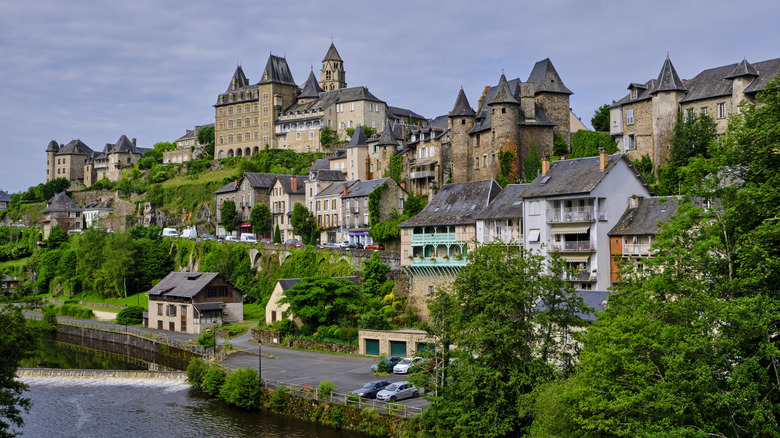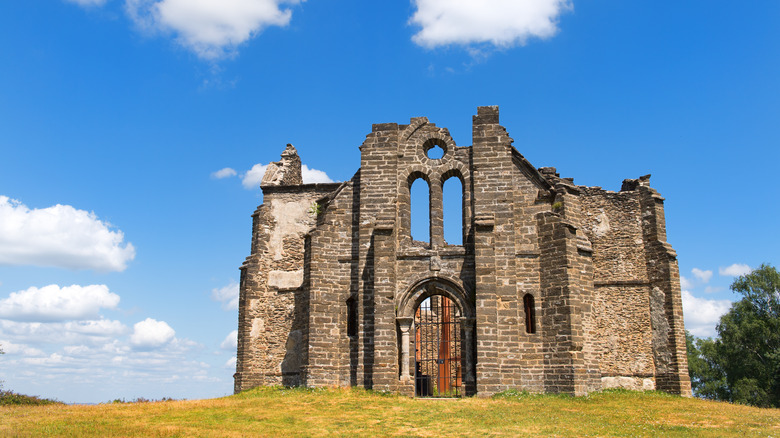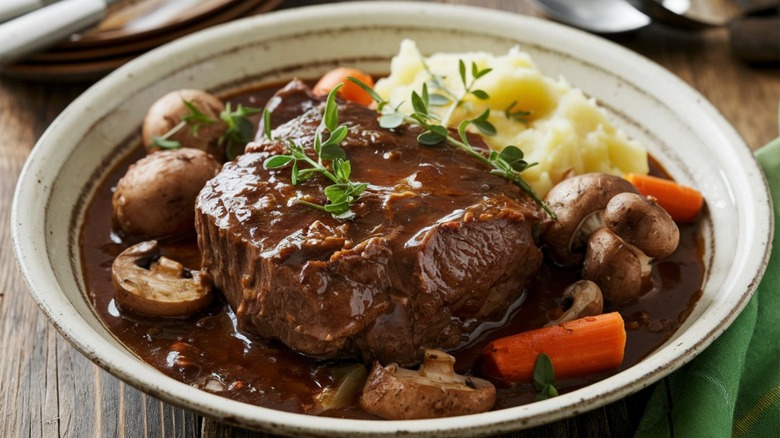One Of France's Prettiest Regions Is A Nature Lover's Paradise With Mouth-Watering Cuisine
Ah, France. What is it about this European country that is so seductive? Is it the magical Medieval villages? The aroma of freshly-baked bread wafting from a corner boulangerie? The majesty of the alps, the vineyards of Bordeaux, or the romance of Paris' Montmartre in the spring? There is a reason why France sees the largest number of foreign visitors in the world. It's a singular destination that offers great beauty, oodles of history, and a thriving, distinctive culture that makes you want to pull up a chair at a local bistro and watch the day slip by over a glass (or three) of wine.
While Paris sees the lion's share of tourists, visitors also flock to other popular spots such as Provence, Marseille, Nice, and the French Riviera. However, one region that has managed to lie firmly under the radar is Limousin. Home to rolling hills, bucolic countryside, picture-perfect villages, two regional parks, and top-notch eateries, this is arguably France in its purest form.
Technically part of the newly formed Nouvelle-Aquitaine administrative district, Limousin is a great destination for those keen to beat the crowds found in more well-known spots. With one of the country's lowest population densities, Limousin is a place where you can relax into the natural rhythms around you. This is the France of granite churches, wide open fields, and hearty, local cuisine that is as connected to the land today as it was hundreds of years ago.
Deep forests and cobbestone streets
While Limousin's simple rustic charms are pleasing to the eye, it's a not place known for ostentatious displays of wealth, making it a bit of a mystery how the stretched-out car once favored by the uber-rich was named after the region. Some claim that the hood that covered the driver of the original limos (horse-drawn carriages) resembled the cloaks worn by shepherds from the region. The shepherd connection makes sense, as Limousin is famous for the meat produced by the animals raised in its pastures — especially beef and veal — which is prized all over France.
Limousin boasts several fairytail-perfect Medieval towns, and while all of them are worth a visit, the settlement of Uzerche is a must-see. Just a 43-minute drive south from the region's capital, Limoges, this Medieval collection of towers, turrets, vaulted passages, and stone buildings sits on a rocky rise above the Vézère River and is just about as ideal as an old European town gets. Known as "the pearl of Limousin," Uzerche makes a perfect morning or afternoon trip, where, after meandering its narrow, storied alleys, you can enjoy a picnic along the riverside.
While some are drawn to Limousin for its history, art, and architecture, it's also one of the greenest parts of France, with forests, lakes, rivers and rolling hills. The area is home to scores of parks and reserves, including the Périgord-Limousin Regional Natural Park as well as the Natural Regional Park of Millevaches. Both of these preserves feature thousands of miles of hiking trails, as well as peat bogs, canyons, massifs, and the ruins of castles and Medieval abbeys interspersed throughout the forests and fields.
The food is the thing
When it comes cuisine, fresh and local is the name of the game in Limousin. In addition to some of the best beef, mutton, lamb, and pork in France, the area also grows top-notch fruits and nuts, which find their way into the local recipes. Signature dishes include the cherry and apple cakes known as "clafoutis" and "flougnarde," as well as chestnut fondant, a chocolate-topped pastry that's both earthy and sweet. When it's time to eat, head to Limoges, which boasts a wealth of eateries such as La Petite Meuel, which specializes in all things cheese. Comptoir St. Jean does great wine pairings and charcuterie, while Chez Alphonse is a terrific bistro that serves up gourmet dishes employing the best cuts of Limousin's beef and pork.
The area is also known for its porcelain, which you can check out at the Adrien Dubouché National Museum in Limoges. Founded in 1845, this museum houses over 5,000 pieces of ceramics from Limousin and around the world, including ancient Greek terracotta, works by Picasso, and treasures from China. It's open daily, from 10:00 a.m. to 12:30 p.m. and from 2:00 p.m. to 5:45 p.m., with an admission fee of $7.
Limoges makes a great base of operations for exploring Limousin. Most people travel via high-speed train from Paris, which takes just a little over three hours. Once situated, however, you may want to consider renting a car, as the sites in the region are spread out and not always conveniently accessed via public transportation. For more under-the-radar-destinations in France, consider these options.


